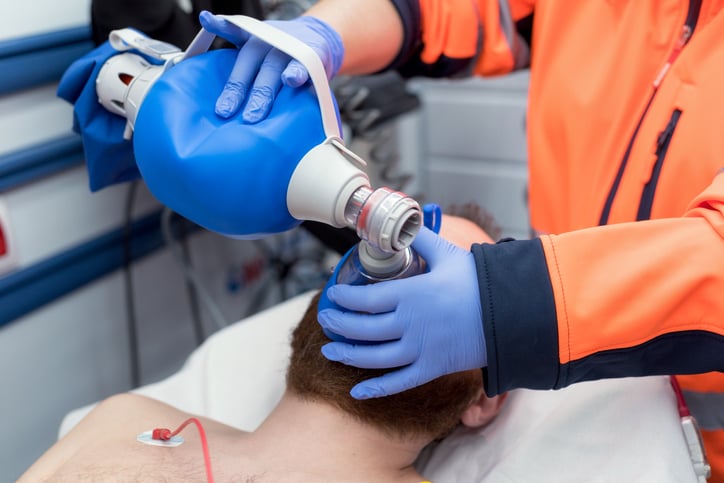
As a foundational tool in the basic airway management toolkit, bag valve mask ventilation can save lives, relieve patient stress, and make transport easier. Bag valve mask ventilation is appropriate when a patient shows signs of hypoxic respiratory failure, apnea, or hypoxically induced altered mental states. Patients who are hyperventilating or have sustained injuries that reduce respiratory effort may also require ventilation. It may be appropriate to ventilate women in labor when there is reason to believe that they are not getting adequate oxygen or are so fatigued that breathing becomes difficult.
Though most patients can be easily ventilated with a bag valve mask, some may present serious difficulties. Here are the predictors:
Altered Mental State
A person in an altered state of consciousness is less likely to be cooperative because they may not be able to follow directions or understand what is happening. They may also struggle to remain still or follow directions, making ventilation difficult. Patience, compassion, and a slow approach often help. People with dementia, pediatric patients, intoxicated patients, and patients with intellectual disabilities may need additional support to tolerate ventilation.
Obesity
Patients with a BMI greater than 30 can present ventilation difficulties because of structural differences in their faces and airways. Despite what many think, it’s impossible to assess BMI based on appearance alone, so gaining data about height and weight may help first responders anticipate potential challenges.
Facial Obstructions
Facial obstructions can make ventilation more difficult. A very short jaw is a common predictor, but difficult ventilation does not require structural anomalies. Simply having a beard has been shown to interfere with ventilation.
High Mallampati Classification
Just as a high Mallampati classification can effectively predict a difficult airway, it may also warn of difficult ventilation. Class III and Class IV patients are more likely to present challenges.
Age
Patients over the age of 55 are more likely to have difficulties with bag valve mask ventilation. This may be because of decreased muscle tone in the upper respiratory tract and subtle changes in the shape of the airway.
Snoring
Snoring may indicate structural abnormalities that make all forms of oxygenation more challenging. It can also be an early warning sign of certain respiratory diseases. Ask about a patient’s history of snoring. If the patient is snoring during treatment, this is a strong indicator of potentially difficult ventilation.
Equipment as an Antidote
The difficult airway is a very real phenomenon that extends to basic techniques such as bag valve mask ventilation. But the right equipment, coupled with exceptional training, can reduce the risk of airway management issues.
In many cases, the problem is not the patient’s airway; it’s the treatment provider’s lack of training or poor-quality equipment. Regular drills that help clinicians and first responders master ventilation in patients of many sizes and needs can reduce the prevalence of ventilation difficulties.
Every person charged with bag valve mask ventilation must become an expert on all of the necessary equipment and must learn how to choose the right device for each patient.
Quality suction equipment enables you to quickly clear patients’ airways. If you have to intubate, suctioning with the right machine delivers quick, safe care.
Portable suction ensures that you can treat patients wherever they are and rapidly care for them when airway management difficulties rear their ugly heads. For help choosing the right machine for your organization, download our free guide, The Ultimate Guide to Purchasing a Portable Emergency Suction Device.
Editor's Note: This blog was originally published in June 2025. It has been re-published with additional up-to-date content.















